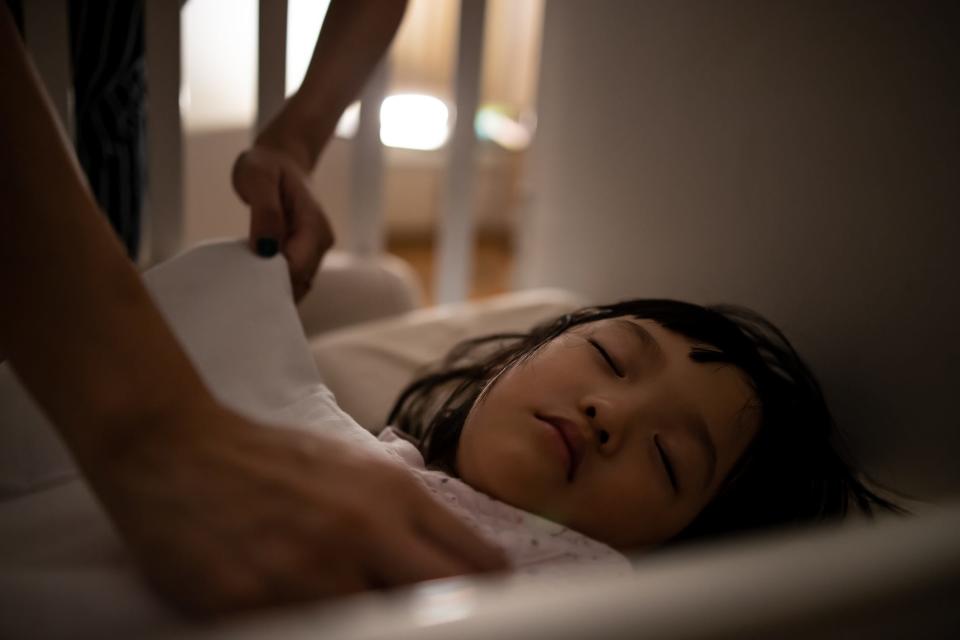Daylight saving time can wreak havoc on kids’ sleep schedules: How to help them adjust
Daylight saving time begins Sunday. Though there may be joy around the season changing, the time change isn't always met with much excitement – especially from parents.
For almost all states across the country, clocks "spring forward" an hour on the second Sunday of March each year and they "fall back" on the first Sunday of November. Though the exact dates vary, the thing to know is that sleep is lost in spring and gained in fall.
Clocks will go ahead one hour on March 10 this year. For many, it will mean an annoying change in schedule. For parents, it could mean total upheaval in kids' sleep cycles.

Here are some ways to help your family cope with the change.
When is daylight saving time 2024? Millions have sunsets after 6 pm as time change approaches
Make adjustments to your child's sleep schedule ahead of the time change
Utah mom of three and registered pediatric nurse Kayla Younger, who shares about pediatric sleep online, advises that parents help babies "gradually ease into the time change" by waking them up 10 minutes earlier in the days leading up to the change.
"If parents aren’t able to wake baby up 10 minutes earlier each day the week before the time change, then I’d recommend just letting the kids/baby sleep in Sunday," she shares with USA TODAY. "But don’t let them sleep in past 8:00/8:30 a.m. because it can throw off naps and bedtime."
Example sleep schedule for springing forward
Parenting website Happiest Baby also recommends easing kids into the time change by shifting bedtimes by 15 minutes earlier (spring) or later (fall) in the days leading up to the event.
For example, if your child's bedtime is normally 8 p.m., parents could use the following plan for springing forward:
Thursday: 7:45 p.m. bedtime
Friday: 7:30 p.m. bedtime
Saturday: 7:15 p.m. bedtime
By Sunday, bedtime will be 7 p.m., which is essentially 8 p.m. when clocks move forward an hour.
The opposite approach would work for the fall: gradually push bedtime later to try to get kids to sleep until their normal wake time.
More than anything, parents should know that "it can take a week for babies to adjust to the time difference so be patient in the process," Younger says. "Sleep may be thrown off for a bit while they adjust."
Adjusting lights, more tips to help kids sleep
Melatonin, the body's sleep hormone that helps with its sleep/wake cycle, is suppressed by light.
"Light exposure halts its production," according to the Sleep Foundation. And since darkness increases its production, it can throw the body off kilter when daylight saving time rolls around in March and a parent is trying to get a child to go to bed while there's more sunlight and wake up when there's less.
Here are some tips on ensuring healthy melatonin production while the body adjusts to the time change:
Cut off screen time at least an hour before bed as the light from the screen disrupts the production of melatonin.
Use blackout curtains to ensure a dark room for good melatonin production.
Only use red, yellow or orange light in your child's room. These lights have "little impact on the circadian rhythm" and "increase melatonin production," according to the Sleep Foundation. Bright and colored light like blue light and green light suppress melatonin production.
Purchase a sun nursery lamp or sunlight alarm clock to signal to your child's body that it's time to wake up.
What is the reason for daylight saving time?
"The United States adopted daylight saving time on March 31, 1918, as a means to conserve electricity during wartime, not, as commonly believed, to allow farmers to work longer in the fields," the Library of Congress states. "In fact, the agriculture industry fervently opposed the measure because farming schedules are based on sunrise and sunset not the clock."
The U.S. abandoned daylight saving time at the federal level after World War I, USA TODAY previously reported, but most states continued to observe. The Uniform Time Act of 1966 chose how states would observe, but most of Arizona and Hawaii stay on standard time year-round.
Is daylight saving time ending?
The push to stop changing clocks was put before Congress in the last couple of years, when the U.S. Senate unanimously approved the Sunshine Protection Act in 2022, a bill that would make daylight saving time permanent, USA TODAY previously reported. However, it did not pass in the U.S. House of Representatives and was not signed into law by President Joe Biden.
Contributing: Emily DeLetter and Camille Fine
This article originally appeared on USA TODAY: How to help kids adjust to daylight saving time, springing forward
Solve the daily Crossword

